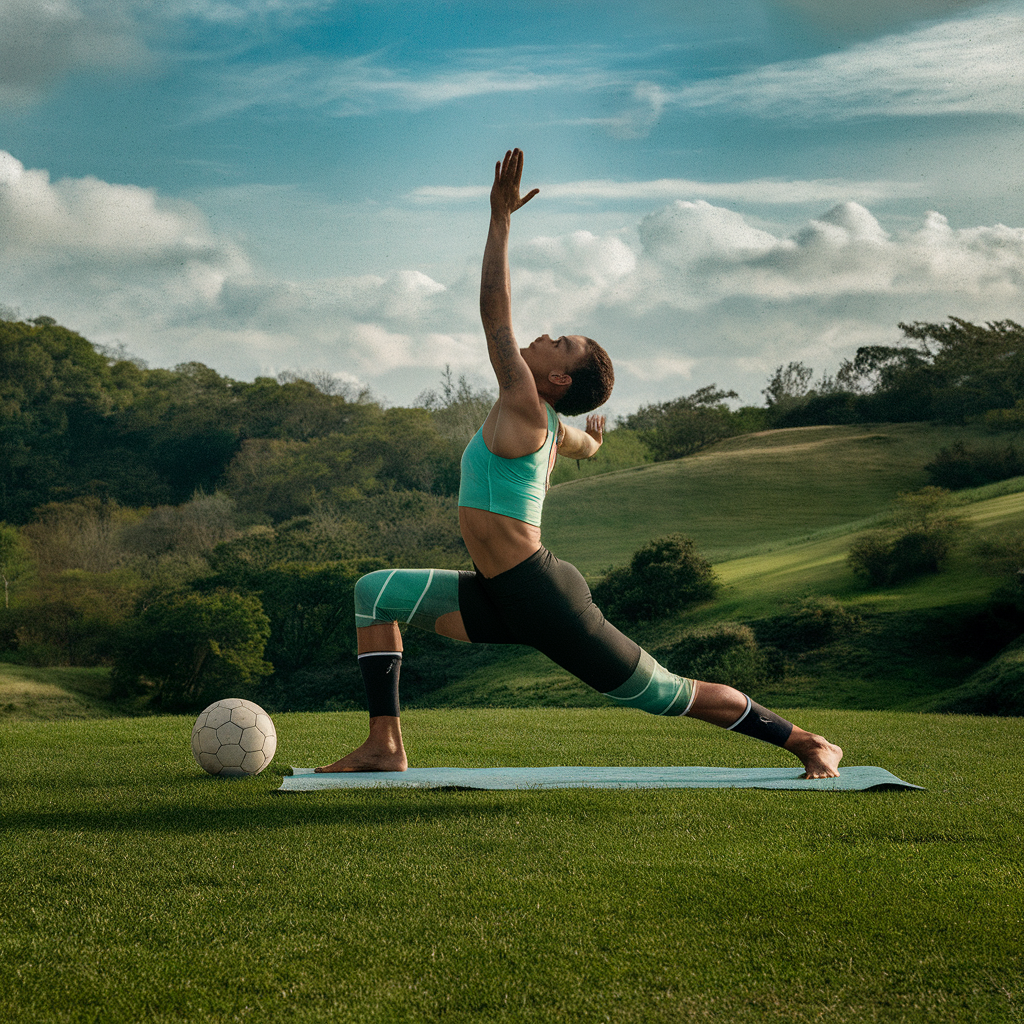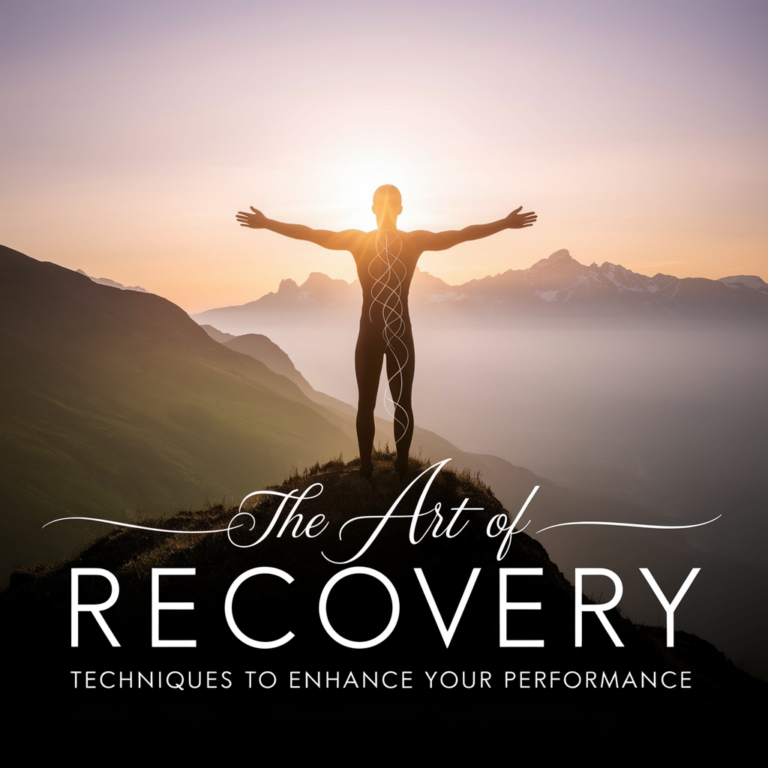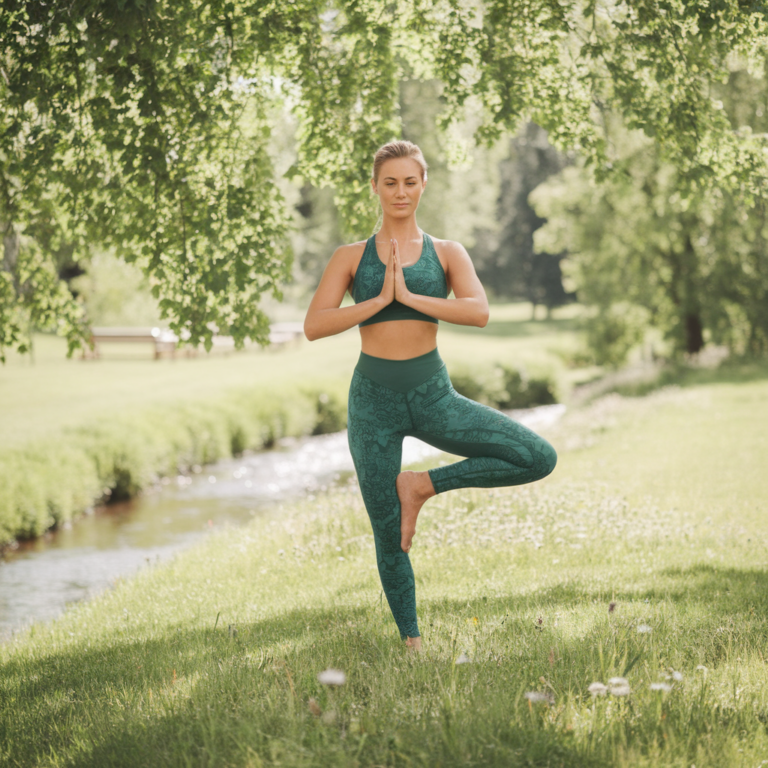Embracing the Balance
In today’s fast-paced world, where athletes are constantly pushing the limits of human performance, a growing number of them are turning to yoga—not just as a form of relaxation, but as a vital component of their training regimens. It’s fascinating, really, how these two seemingly disparate disciplines—yoga and traditional sports—are converging in a beautiful dance of mindful movement. But what drives this intersection, and how can it benefit athletes? Spoiler alert: it’s not just about finding your inner zen.
The Athletic Landscape
To truly appreciate the integration of yoga into sports, one must first understand the rigorous demands placed on athletes. Whether you’re sprinting down a track, engaging in a competitive match, or performing acrobatics on a gym floor, the physical toll is significant. Injuries are common, and recovery is essential. This is where yoga steps in, offering a pathway to enhance flexibility, strength, and mental clarity.
Take, for instance, the world of professional football. Many teams now incorporate yoga sessions into their weekly practices. It’s not uncommon to hear stories of players who initially scoffed at the idea—“What can stretching and breathing do for my game?”—only to find themselves becoming more agile and less prone to injuries. One NFL coach, who wishes to remain anonymous (we’ve all been there, right?), noted that his players “moved better, felt better, and even played better” after committing to regular yoga sessions. Who would’ve thought?
The Benefits of Mindful Movement
So, what are the specific benefits that yoga brings to the table for athletes? The advantages are plentiful, and while some may sound like buzzwords tossed around in wellness circles, they are grounded in real physiological and psychological improvements.
1. Enhanced Flexibility
Let’s start with flexibility, that often-overlooked quality that can make or break an athlete’s performance. Many sports place an incredible strain on the body, and tight muscles can lead to injuries. Yoga promotes greater flexibility through various poses that stretch and lengthen muscles. A study published in the “Journal of Sports Medicine” found that athletes who practiced yoga regularly showed a marked improvement in flexibility compared to those who engaged only in traditional training.
2. Improved Strength
Contrary to popular belief, yoga isn’t just about bending and stretching; it can also build strength. Many yoga poses require you to support your own body weight, thus engaging multiple muscle groups simultaneously. Athletes often find that their core strength improves significantly after a few weeks of consistent practice. A personal trainer I once spoke with shared, “I had a client who was a seasoned marathoner. After integrating yoga into her training, she not only felt stronger but also ran faster with less effort.”
3. Mental Clarity and Focus
Perhaps one of the most profound benefits of yoga is its impact on mental health. The practice encourages mindfulness, which can lead to improved focus and concentration. Athletes often face immense pressure during competitions, and the ability to stay present can be a game-changer. One Olympic athlete I interviewed remarked, “Yoga taught me to quiet my mind amidst chaos. It’s like having a mental reset button that I can press whenever I need to.”
4. Injury Prevention and Recovery
Injuries are a harsh reality in sports, but yoga can serve as a powerful preventive measure. By enhancing flexibility and strength, athletes are less likely to suffer from common injuries. Furthermore, if an injury does occur, yoga can aid in the recovery process. Stretching and breathing techniques can alleviate pain and promote healing. I remember a friend who was sidelined with a knee injury; after a few weeks of yoga, she was back on her feet, and better yet, more in tune with her body than ever before.
Real-Life Examples
There’s something incredibly compelling about real-life stories, isn’t there? They help ground the theory in reality and make it relatable. Let’s take a moment to spotlight a few athletes who have embraced yoga and witnessed transformative results.
1. LeBron James
The basketball phenomenon LeBron James is often in the spotlight for his incredible athleticism and skill on the court. What many don’t know is that he credits part of his success to his rigorous yoga practice. LeBron has stated in interviews how yoga has helped him maintain his flexibility as he ages, allowing him to extend his career and continue performing at an elite level. He’s not just dunking; he’s also downward-dogging!
2. Novak Djokovic
Another prime example is tennis star Novak Djokovic. In addition to his strict diet and intense training regimen, Djokovic incorporates yoga into his routine to enhance his performance. He has openly discussed how yoga has helped him improve his mental focus during high-stakes matches. The result? A record-breaking career filled with titles and accolades.
3. The Yoga in Sports Movement
Beyond individual athletes, there’s a growing movement within the sports community to integrate yoga more fully into training programs. Many coaches and sports psychologists are now advocating for a holistic approach that includes mindfulness practices. This shift reflects a broader understanding of what it means to be an athlete in the 21st century.
Bridging the Gap: Teaching Athletes to Embrace Yoga
Of course, there’s more to this intersection than simply rolling out a mat and doing a few sun salutations. Teaching athletes the value of yoga requires a thoughtful approach. Here are some strategies that have proven effective in bridging the gap between yoga and sports:
1. Tailored Practices
Not all yoga styles are created equal. To resonate with athletes, it’s essential to tailor practices to meet their specific needs. For instance, a powerlifter may benefit from restorative poses focusing on recovery, while a gymnast might require poses that enhance balance and flexibility. Personalization is key—like ordering a custom pizza, but with fewer toppings (and no pineapple, if you don’t like it).
2. Educating on Benefits
Many athletes may initially view yoga as “not for them.” It’s crucial to educate them about the tangible benefits of incorporating yoga into their training. Workshops, seminars, or even brief sessions with yoga instructors can help demystify the practice and highlight its practical applications in their sport.
3. Creating a Supportive Environment
Encouragement goes a long way. Coaches and teammates can create a supportive environment that fosters interest in yoga. Simple initiatives, like group yoga sessions after practice, can lead to a culture that embraces mindful movement. It’s like having a workout buddy, but with added tranquility.
Potential Pitfalls and Misconceptions
1. Time Constraints
Time is often a significant barrier. Athletes have jam-packed schedules, and fitting yoga into their routine can seem daunting. However, short, focused sessions can be just as effective. A 20-minute practice can work wonders—think of it as a power nap, but for your body and mind.
2. Fear of Injury
Some athletes may worry that yoga poses could lead to injury if not executed correctly. This concern is valid, but it can be mitigated by ensuring that athletes work with qualified instructors who can guide them through proper techniques. Safety first, folks—nobody needs a yoga-related injury to add to their list of woes.
3. Finding the Right Style
Not all yoga styles will resonate with every athlete. Some may thrive in a vigorous Vinyasa class, while others may prefer the stillness of Yin Yoga. It’s important for athletes to explore different styles to find what suits them best. It’s kind of like dating—sometimes you need to go on a few bad dates before you find “the one.”
The Future of Mindful Movement
As we look to the future, it’s clear that the intersection of yoga and sports is only going to deepen. With the rise of wellness culture and a greater emphasis on mental health in athletics, the incorporation of yoga practices will likely become even more mainstream. We may soon see yoga classes being offered alongside traditional training sessions in gyms and sports facilities everywhere.
Moreover, as more athletes advocate for the benefits they’ve experienced, it’s only a matter of time before this practice is celebrated for its contributions to peak performance. After all, who wouldn’t want to channel their inner warrior before stepping onto the field or court?
Conclusion
In a world where athletic prowess is often measured by physical strength and speed, the quiet power of yoga is a reminder that mindful movement is just as critical. As athletes continue to explore this intersection, they will find that yoga is not merely a form of exercise but a holistic approach to enhancing their entire being—body, mind, and spirit. The next time you see a professional athlete on the field or court, take a moment to appreciate the mindful movement behind their performance. Who knows? They might just be one downward dog away from their next big win.
As I reflect on this journey of exploring the convergence of yoga and sports, I can’t help but smile. It’s a beautiful tapestry of strength, flexibility, mindfulness, and—let’s be honest—a touch of humor. So, whether you’re an elite athlete or a weekend warrior, consider giving yoga a try. You might just find that it opens up a whole new world of possibilities.








